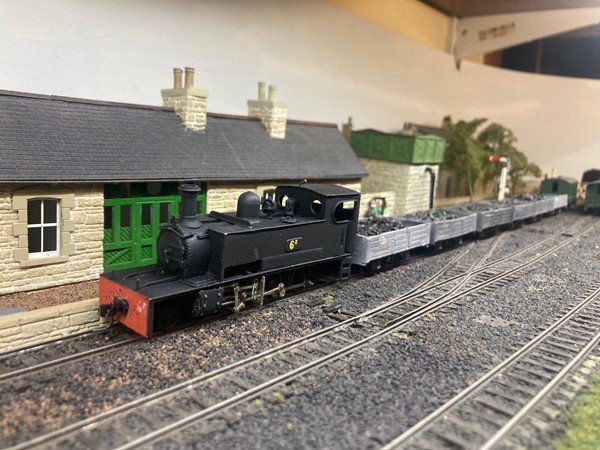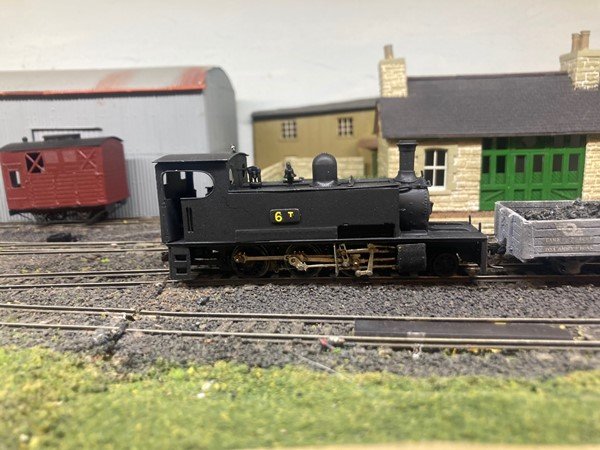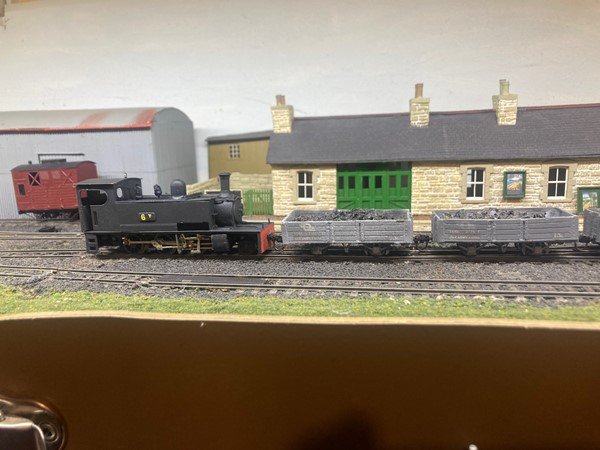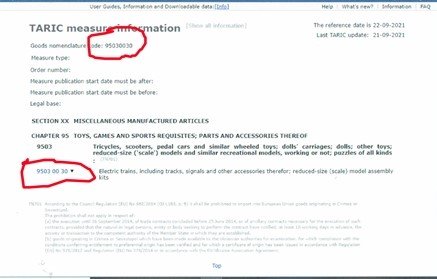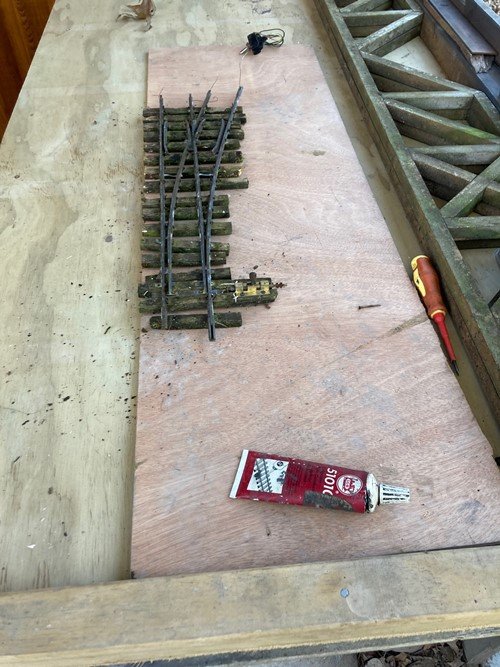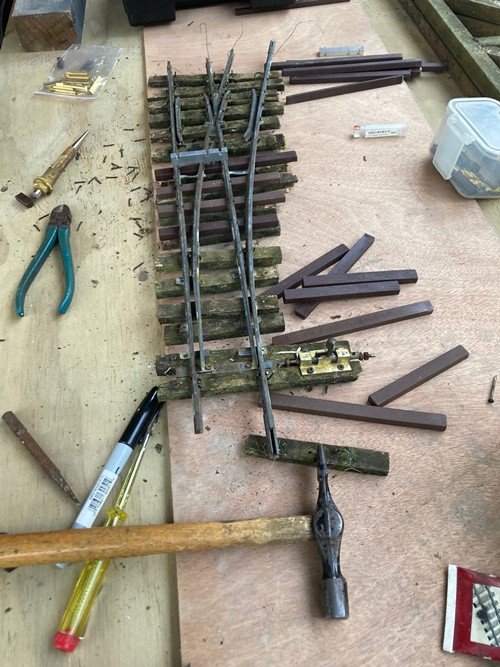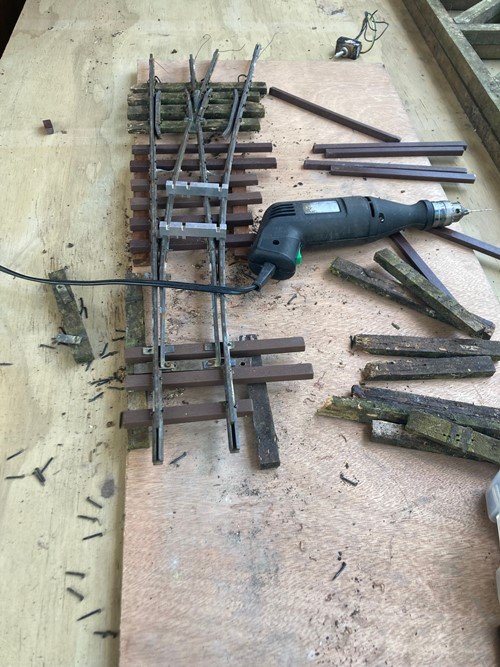-
Posts
4,853 -
Joined
-
Last visited
-
Days Won
119
Content Type
Profiles
Forums
Events
Gallery
Blogs
Store
Community Map
Everything posted by Mayner
-
Probably best to check out die-cast car dealers for 1:24 Scale cars This seller has 1:24 scale die cast cars including a Morris Minor http://www.ebaystores.com/suprememodelsonline Morris Minor, VW Beetle & pick up truck, Fiat "Topolino" and post 55 rear engine 500 were fairly common in Ireland between 50-70s. Farmers with small dairy farms would use Morris Minor or Beetle to tow a small trailer to take milk churns to the creamery
-
Very well written an informative article about the "Indian Summer" of Sligo Line freight operations during the 1990s when for a short time IE was pro-actively pursuing new traffic including re-laying and re-opening the Sligo Quay traffic for Cold Con traffic, timber, grain, and less than train load such as Molasses and Cold Chon Bitumen. There may be some truth in Tim Mulcahy's claims that railfreight was run-down to improve the return to the Exchequer (and Toll Road companies) for major road improvements and motorway construction that took place after 2000. The road transport industry is a huge source of revenue drivers income tax, vehicle registration and licensing fees and excise duty on fuel while the railways were seen as a drain running on green diesel and requiring a subsidy. Tim Mulcahy's comment about doing a lot of freight work as a 'less senior driver" was the root of the problem that lead to the ILDA dispute. Because of the seniority system a senior driver basically had to die or retire in order for a driver to progress from a freight to a passenger link, many of the less senior drivers who worked Liner Trains were almost continuously rostered on night work with little opportunity for shift rotation which can lead to physical and mental health problems. Unfortunately like the UK Miners Strike the ILDA dispute was ill timed and played into the hand of a government that had little confidence in CIE or IE management.
-

Ernies Massive Irish 1930's to 2005 Photo Archive
Mayner replied to Glenderg's topic in Photos & Videos of the Prototype
Tried to identify the location the "double track" section between Ballinamore station and the divergence of the Main Line and Arigna Branch. Photo appears to be taken from the cab of a Passage Engine with the 'Bus Coach" and a "Milk Van" on the mail line and 5T on the branch. The Ballinamore Byepass follows the right of way of the Main Line and Tramway to the site of Tully Gates before curving around to follow the reserved section of the Tramway along Golf Links Road which runs alongside the Ballinamore and Ballyconnel Road joining the R208 Fenagh-Drumshanbo Road near the site of Ballyduff Halt. Last time I visited Golf Links Road was single lane probably no wider than the original narrow gauge right of way. -
6T is back out on the road working coal traffic following her repairs, I completed the kit in the late 90s so hopefully she should be good for another 20 years! Passing Keadue with a laden coal train for Boyle or possibly Sligo. Prototype C&L coal trains usually loaded to 10 wagons & a van, though staging roads will only take 5. There is some snagging to complete I am not happy with the rear coupling mount and front spectacles require re-glazing with Crystal Clear, need to sort out a front vacuum pipe and above all a crew. Although the original paintwork wasn't bad I gave the loco a quick re-paint and finished the loco with the last of my stock of Testors Dullcote, the loco was still in reasonable cosmetic condition after its 1st years service on the C& L but the sheen had gone off her black paintwork. I used HMRS Presfix LNER loco transfers as the numerals are similar to those used by CIE, the biggest challenge was forming the letter T from an E! The coal wagons are my own resin castings from a brass master with custom lettering by SSM 15L has developed a distinctive sag from overloading/pulling out of the mould a bit too soon. The horsebox in the background is a refugee from the Clogher Valley, I will have to build a matching passenger brake and a Sharpie to go with the horsebox and my two CVR coaches. No progress to report on the cattle wagons and new opens, will have to order couplings, wheels and lettering.
- 392 replies
-
- 10
-

-
While An Post are responsible for customs clearance and collecting vat, Revenue and Customs set the ground rules and expectations of how An Post carry out these duties including expectations around minimum standards for customs declarations. I had some interesting feedback from another carrier that indicates that the problem may not be limited to An Post. Basically all carriers are experiencing problems delivering IOSS shipments to a small number of (un-named) EU countries, the problem is driven by national Customs Authorities taking their own interpretation of the new EU vat rules which is leading to inconsistencies within the EU. This is leading to challenges for IOSS sellers applying standardised processes across all 27 EU States, sometimes resulting in IOSS customers being charged Vat & admin fees by the local customs authorities. I was advised that the major shipping and logistics companies have raised the issue at high level with the EU in Brussels and across all 27 EU states. Personally I suspect the Irish Government saw the new rules as a golden opportunity to collect VAT on every parcel arriving in Ireland and decided to plough ahead without considering the practical implications for An Post or its customers.
-
I have parcels in limbo in the An Post system waiting to be returned to sender for 7 weeks. On the positive side a parcel that was last scanned in the Athlone Mail Centre on 30 Aug "We could not deliver. We will try to return it to sender" appeared unannounced on our door step (in New Zealand) on Monday. We will probably re-send with another shipper. I had a number of parcels stopped by An Post in August, interestingly some but not all of the parcels were cleared and delivered in response to an intervention by NZ Post early in September. Basically it looks like An Post made a policy decision not to accept amendments/corrections to customs declarations that were rejected by their electronic customs clearance system and return rejected parcels to sender.
-
Railwaymen & women will try and complete a shunt with as few moves as possible; its likely the crew of B165 would have coupled on to the coaching stock after running round, before pulling out that long cut of wagons to release the brake van and the wagons due to go out in the mixed. Choice things would have been said about the crew that left the Van by the stop blocks rather than some where handy like the cattle bank road. The staff at Limerick Junction had harsh words to say about the North Wall Shunters (human) that marshalled the Limerick portion of the day Cork Liner in two separate rather than a single cut of wagons one Oct Bank Holiday Friday in the late 1990s. The additional shunting was time consuming and could potentially delay Heuston-Cork-Tralee passenger services and the Shelton Abbey-Marino Point Anhydrous Ammonia train, high pressure stuff. There are some nice photos of a mixed train with Kerry Bogie, GSWR Bogie coach & wagons in Kenmare Goods yard in Ivo Peters "Somewhere along the Line", there is also a late 1950s photo of the Loughrea mixed complete with the statutory 3 MGWR 6 Wheelers shunting a cut of covered wagons in Attymon Junction goods yard goods store road. According to Peters when made up the mixed complete with coach and van retired to the goods yard (possibly for the crew to have lunch or load sundries traffic) before returning to the platform at the appointed hour. In railcar days the Donegal was famous for taking passengers for jaunts around goods and loco yards, shunting 'Red Vans" & turning railcars. In more modern times I saw the loco and coaches of the evening Connolly-Longford Commuter shunting the Longford Liner. After discharging the passengers the loco and coaches propelled back towards Mostrim before running forward onto the Gantry Road. The loco coupled on to the Liner while still coupled to the coaches, then pushed-pulled the combined train until the coaches were safely stabled on the Gantry Road. The loco then uncoupled from the coaches and continued to propel the Liner out on to the Mail Line at the Sligo end of the station, before drawing forward into the passing loop to cross the Down evening Connolly-Sligo passenger. Dugort Harbour is a bit of an out of the way place seldom disturbed by a Traffic Inspector from Cork or let alone Kingsbridge. I was once asked "Ar-U-from Tralee?" when I asked a retired Kenmare Postman for directions while on 'Official Business" with the Health and Safety Authority", the post man was shocked that "they" had sent someone from Dublin jumping to the conclusion that I was there 'about a man that fell from a roof" while I was only there on a "flag flying" exercise in "The Kingdom"
-
The Wexford-Rosslare local trains ceased in the late 1970s possibly 78. In its final years the train seems to have operated as a summer only service for holidaymakers , the train was worked by the loco of the Dublin-Wexford Newspaper train (B141+ bogie parcels van) working down in the early hours of the morning delivering the Dublin morning newspapers returning in the evening after working the last Rosslare Harbour-Wexford local. During the final season the coaches of the local were used to form an additional late evening Wexford-Connolly passenger that followed the evening Rosslare-Connolly passenger, returning in the morning as an passenger/newspaper train. I saw the local/empty newspaper train in the loop at Wexford during a summer holiday day trip by rail in the summer of 77 or 78 from Dublin to Waterford by Limerick-Junction home by Rosslare Strand.
-
It looks like IE have contracted out track maintenance to Rhomberg Sersa Group possibly a "partnership' agreement. Possibly IE staff transferred to the new undertaking similar to what happened in the UK during the 1990s. Seems to be a multinational track/infrastructure maintenance company https://www.rhomberg-sersa.com/en that operates in Europe, the UK and Australia.
-
They appear to have considered a 'Southern loco" mainly working on the old GSWR & WLWR. In their final years B101 possibly including 103 work the weedspray taking a member of the class visiting the entire CIE & NIR system
-
Recent e-mail from my NZ Post account manager indicates that An Post require a 10 digit TARIC code to clear an Item through Irish Customs, although the EU TARIC look up site shows an 8 digit code The example is a kit that An Post claim was rejected as a result of issues with the electronic customs declaration. "Hi John, We've had feedback on advice for Ireland bound shipments going forward. Please see this below. 1. Descriptions to have spaces between words. '/' is not an ideal word separator. 2. The tariff item to be entered is the 10-digit taric code for EU destined items. For example, 95030030 could be 9503003000 however, to be clear, this is not being provided as tariff advice, it is an example. It is the sender's responsibility for providing the correct taric information. It might be worth raising the issue on an RTE consumer affairs problem especially as its coming up to Christmas. A phone call or programme on gifts from family in the UK and children's toys being delayed because of An Post bureaucracy is certain to stir public interest.
-
They appear to have taken over the Rosslare Express workings from the Woolwich Moguls. The main complaint among drivers was cold feet, the Sulzers were reliable, smooth running, good haulage at slow speed and efficient brakes. They were mainly concentrated on North Wall-Heuston transfer work and Dunlaoire Parcel Trains when I first noticed them in the late 60s early 70s , always seemed to be one waiting at Island Bridge Junction to work a transfer goods when I went by on the No23 bus or one on a parcel train in the old Dunlaoire Station while returning from a seaside outing to Bray. The cabs may have been cramped, but the engine room was surprisingly spacious probably enough room for a Sulzer 8LDA engine used in the BR Sulzer Type 3 Class 33. I sheltered in the engine room of 106 with a group of enthusiasts during a downpour an Inchacore Works visit.
-
I think Neil Ramsey's C&L 4-4-0 is an old Archangel model. John Campbell batch built several classes of live steam Irish Narrow Gauge Locos some of which appear on Neil Ramsey's railway. I had set my heart on a John Campbell T&D 2-6-0T, but he was not prepared to export outside of the UK or Europe.
-
Last weekend was something of a milestone: I had been planning to replace the worksurface of the outdoor work bench/large scale loco maintenance area with a sheet of ply for some time but was delayed when our 25 year old Honda CRV was written off in a crash, getting a replacement vehicle sorting out a roof rack and 2 week Covid lockdown in Aug. I bit the bullet and bought a sheet of ply to protect the garden railway before the tree surgeons arrived to remove a dead tree, trimmed it down and installed the new worktop on Saturday. Its said the larger the scale the nearer it comes to operating and maintaining a full size railway and 1:20.3 scale for modelling 3' narrow gauge on 45mm (Gauge 1) track becomes pretty close with track and trackbed requiring regular maintenance and replacement as parts wear out or decay. I had to replace the ties (American for sleepers) on half of the main circuit and yards after 6-7 years use as a result of UV damage to the original plastic sleepers and a recent inspection indicates that the remainder of the main circuit is due for renewal after 10-11 years use although the original section installed 12 years ago is still good. Fortunately the rails are probably good for another 10-15 years. More pressing the ties and crossing timbers on the turntable/loco yard turnout at the main yard on the outdoor section are becoming over-due for renewal. The turnout was handlaid using yellow cedar timbers as an economy measure compared to buying ready assembled switches, the timbers were milled to match the Accucraft Narrow Gauge track used on the main line which did not match available ready made 1:20.3 switches. This was my first hand laid 1:20.3 switch was becoming increasingly difficult to maintain as the timbers were no longer holding the spikes due to splitting and some of the timbers had started to rot. Replacement timbers laid out beside existing switch I had decided to replace the cedar timbers with Sunset Valley plastic timbers several years ago but had not gotten round to it, being a service track speeds are low and heavy locos usually re-rail themselves without too much fuss. Replacement timbers appear to be a mixture of Sunset Valley Gauge 1 and Narrow Gauge! Replacing timbers between crossing & switch components. Rather than completely dismantling the turnout in order to maintain gauge and the relationship between the switch and crossing components. I drilled out the holes for the spikes with a 1.2mm drill, punched home with a hammer and nail punch. Existing cedar timbers removed in switch and toe area, new headblock timbers fitted. The turnout is resting on packers to allow the spikes to be pushed home as they project through the timbers. The next stage of the assembly is to turn the turnout over bend/clinch the projecting ends of the spikes against the bottom edge of the timber, not the easiest thing to do with blackened steel spikes. I left out the timbers under the switch rails as I need to fabricate and solder new slide chairs/plates in position before installing the timbers. Mock up with crossing and switch timbers fitted. Approx. two afternoon's work to get to this stage a new Narrow Gauge No 4 Switch would cost approx. $100us plus shipping. I usually use No 6 switches for running lines with No 4 switches for secondary trackage or tight spots were a No 6 will not fit
-
"We could not deliver your post. We will try to return it to sender." actually means we got an error message when we attempted to input the electronic customs declaration received from the Royal Mail into the An Post system. "We will try to return to sender" basically means we will return the item (from the Athlone Mail Centre) when we have a truck load of parcels ready to return to the UK. I am planning to follow up with a formal complaint to An Post and follow up with the regulator if we do not get a satisfactory response. I would recommend contacting the Royal Mail rather than An Post if you want to take the matter further. Ask the Royal Mail to investigate the incident asking for an explanation asking why An Post were unable to deliver and request details of the specific issues identified with the electronic customs declaration.
-
David I would not recommend using a resin printer within a living area can produce some nasty fumes. I have mine set up in a shed with an extract system, shed with insulated floor walls ceilings, electrical heating and humidity control. Setting up the first prints (support structure) and identifying a suitable resin especially for 3D wagons or coach chassis can be challenging. Although I have done some 3D CAD work I use a freelance designer for commercial work, the time taken and cost per model has dropped considerably as he gained railway experience and we both developed an understanding of the limitations if what can be achieved in terms of railway models. It might be worth while thinking of designing a 7mm or larger scale 3D coach or wagon with separate sides, ends, roof and underframe to assemble as opposed to a one piece model. simpler to design, a higher standard of finish, easier to support and clean up before assembly. One piece models tend to have one good or two good sides with sharp detail, the opposite sides with loss of detail due to lower resolution and removal of temporary supports. Ken. That passenger brake exudes character, great to see such distinctive models from such a neglected railway! That
-
Excellent work! I tried to persuade Pete Parlin to produce a batch of Backwoods miniatures C&L wagon chassis etches to go with my resin cast wagon bodies without success. The thought of 4T etches and 3D printed C&L wagon bodies is very tempting, but its probably time to move up to a larger scale especially if the Accuracraft Live Steam Kathleen I ordered in 2019 ever materialises. https://www.accucraft.uk.com/products/kathleen-lady-edith-cavan-leitrim-4-4-0t/ I don't really have room for additional stock on my current Irish 3' layout and assembling small scale chassis is becoming a struggle with my clunky fingers, shaky hands and failing eyesight.
-
I was recently in contact with Customs and received some useful feedback from An Post in response to problems we experienced shipping goods to Ireland Customs were very helpful and clearly explained the roles and responsibilities to the two organisations, in contrast getting an explanation for the delays from An Post was like pulling teeth. An Post initially providing stock answers that there was a problem with the declarations but failing to provide specific details when requested. Customs explained that An Post is responsible for entering customs data and collecting vat and duties due on behalf of the Revenue, but also responsible for contacting the sender or person receiving the package to make any necessary amendments if there is a problem with the electronic customs declaration transmitted by the sending postal authority to An Post. Customs only become involved when its necessary to open a parcel for examination, presumably when the Customs dogs sniff something suspicious or something on the declaration is flagged. Parcels are cleared by inputting the electronic customs declaration into the Irish Customs system rather than a person reading or a robot scanning the label on the box. Feedback from An Post indicates that the An Post/Irish Customs IT system is very sensitive and that An Post staff are unable/not allowed to correct or amend a defective declaration. Interestingly while there is an EU requirement to enter TARIC codes in a 10 digit format, 8 digit codes are displayed on the EU TARIC Information site. Going back to the DTDP and IOSS, it may be cheaper for an Irish customer to purchase from an overseas supplier that is not a member of the IOSS (under €150) or offer a DTDP (over €150) service and pay the VAT and An Post fee on delivery. As Dive Controller alluded to there are hidden costs to these schemes, an overseas retailer has to appoint an Irish or EU customs agent or intermediary as a middle man to send monthly returns to the Irish Customs despite being registered for Irish Vat and paying vat direct to the revenue the same as an Irish based business, there are considerable hidden costs providing a DTDP (Delivery Tax and Duty Paid) which make it only viable for large high value shipments to Ireland.
-
-
For someone with the space a layout based on Clones in its original or "what if" form would make an excellent operating model with short relatively frequent trains arriving and departing in four different directions, a large loco depot and two goods yards. The GNR operated Clones-Cavan as an extension of the original Ulster Railway main line with four Belfast-Cavan trains made up of modern stock daily, the Irish North appears to have been more secondary main line in nature with a small number of Dundalk-Derry trains intermixed with through Belfast-Enniskillen via Clones & Omagh trains, Enniskillen-Omagh and Enniskillen-Bundoran trains. Diesel units would be a no-brainer for operating a fast Belfast-Cavan-Enniskillen service made up of AEC/BUT, MPD, 70, 80 or CAF units splitting and combining at Clones, with IE eventually replacing B141+2 Bredin/Park Royal/Craven+van with 2 Car 2600 sets for a once/twice daily Dundalk-Clones possibly Bundoran service. Again NIR could simply operate Enniskillen-Omagh as a feeder to the Derry Road with a captive 2 car railcar set or operate a Belfast-Derry-Enniskillen railcar service splitting at Omagh similar to the GNR during the final weeks of the Irish North line. Its just about possible that CIE/IE could have continued freight services to Clones as a railhead for Cavan and Monaghan into the 90s to serve the large meat and dairy processing plants in Counties Cavan and Monaghan, export meat and dairy products going out in ISO containers same as Claremorris, Mallow and Rathluric during the same era.
-

Type of wagon used on the Foynes Ballybrophy line
Mayner replied to Wexford70's topic in General Chat
The Zinc ore wagons were 20T w wheel wagons, there is a photo in the NLI collection showing one of these wagons with a tarpaulin. http://catalogue.nli.ie/Collection/vtls000148612 The rotary tippler may have been re-located to the Limerick Cement factory for unloading the much larger Shale Wagons, the wagon release arrangement were similar. -
I remember herds of cattle being driven down the North Circular Road from the Cattle Market to the Docks during the late 60s early 70s. Although we lived on the Southside I knew the area fairly well as a child and as a teenager My mother's family was from Phibsboro, her sister's family lived in the Artisans Dwellings near the Market and a Great Aunt lived in Ballybough her landlady's husband was a cattle drover. My father had a story of a bull breaking loose and causing havoc near the Five Lamps during the early 60s. It looks like there was a serious proposal to re-locate the market to the North Wall during the early 1930s with the LMS offering to build a covered cattle market and lairage in the Holyhead Yard. The main motivation appears to be that the cattle would be exported in better condition by being fed and rested having been railed directly to the port, than driven from Cabra Bank or Liffey Junction to the Market then driven the two miles to the port. https://www.oireachtas.ie/en/debates/debate/seanad/1932-05-04/8/. The LMS would of course ship the cattle to Holyhead with the nice long rail journey on the other side!
-

Type of wagon used on the Foynes Ballybrophy line
Mayner replied to Wexford70's topic in General Chat
There were Zinc (Mogul) and Barytes mining operations at Silvermines that used different types of wagon. The train in the photo appears to be made up of Barytes wagons which were basically dropside wagons, Zinc was transported in open tippler wagons which were discharged through a rotary tippler at Foynes. There are photos of the both types of wagons at Foynes in the O'Dea collection http://catalogue.nli.ie/Collection/vtls000148612 -
Internationally a number of freight companies are using rail to transport freight between major hubs. In Hamilton (pop. 165k) we currently have two rail served transport hubs serving logistics companies and a further two at development stage on the periphery of the city. While the smaller vans used on post and courier work)are likely to be replaced in the not to distant future by electric vehicles, HGVs will still be required for delivery and collections to and from larger supermarkets, retail parks and industrial sites. Most of the vans and trucks are owned or leased by 'owner drivers" on contract these companies. Although our population density is low compared to European or UK standards, rail has an advantage in New Zealand in terms of longer distances between major centers and an economy that based on producing and processing heavy bulky products as opposed to financial services and IT.
-
I have used battery power for about 10 years Phoenix Sound systems http://www.phoenixsound.com/ DCC is a bit too namby pamby for large or 1:1 scale operations. In a way things are coming full circle from the 1920s and 30s with the development of battery locos in the United States and the Drumm Train train in Ireland. Short battery life and higher capital cost compared with diesel railcars killed off the Drumm Train, New Zealand railways fitted its battery electric shunting locos with Gensets when the batteries required replacement in the 1950s
.png.c363cdf5c3fb7955cd92a55eb6dbbae0.png)

